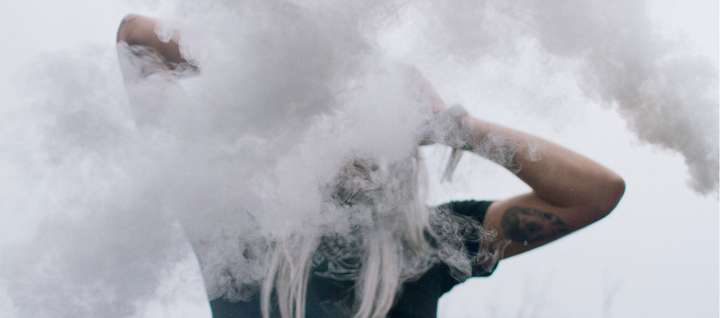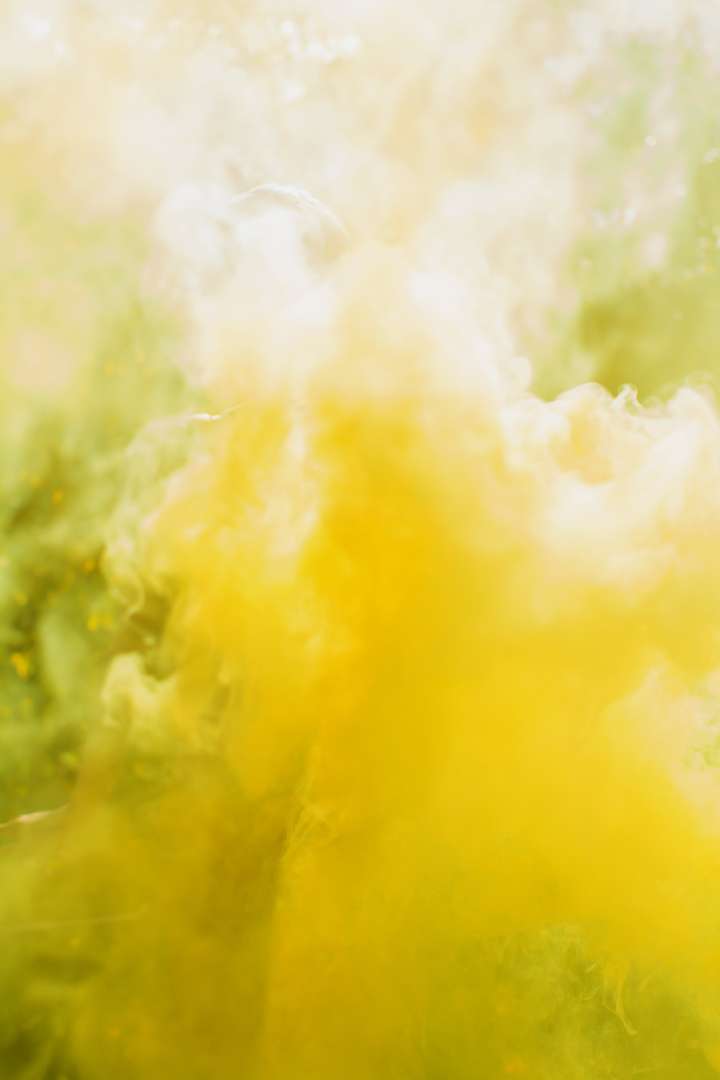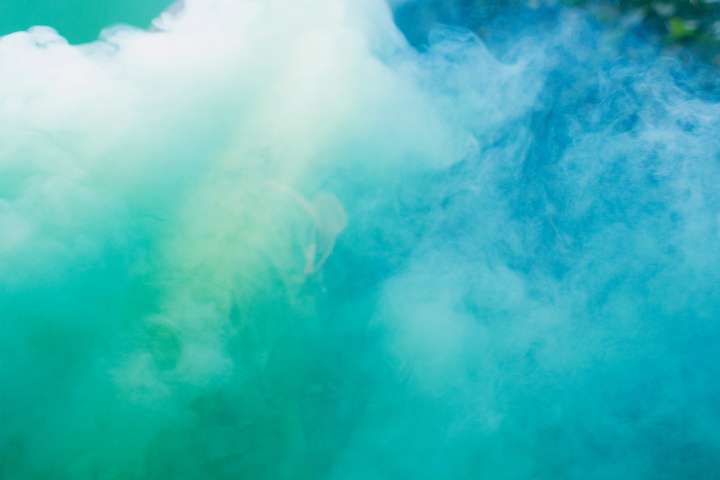
Sex, Death, and the Smell of It All
Written by Arabelle Sicardi
Photographed by Laurence Philomene
Can your fragrance ward off death? Arabelle Sicardi investigates.
• • •

In much the same way that Holly Golightly uses lipstick to prepare herself for awful news in Breakfast at Tiffany’s, I wear perfume as a sort of invisible armor to guard myself against an increasingly frightening world. It’s not enough to smell clean or like the beach. I want to smell transcendent. I want to smell like the stars—what astronauts might remember from their greatest moment alive, the pinnacle of human achievement. The smaller I feel, the more I want from my perfume
I don’t have a signature scent, but I keep a few in rotation—all conceptually based on death, though I swear I never smell like I’m rotting. There’s Bitter End by Roads, inspired by a beautiful yet barren Irish cliff anecdotally known as the site of more than one suicide, and Dior Poison, signaling its name with notes of almond, the plant source of cyanide. Bruno Fazzolari’s Lampblack is inky and earthy and evokes the energy of an alien invasion, and Mississippi Medicine, from D.S. and Durga, with all of its bark, tar, and incense-y goodness, is based on the rituals of a Southern Death Cult. Coven smells like a fresh burial plot, and Wode by Boudicca takes its name from a Celtic queen going to war (the formula is blue, an homage to the bright dye her warriors would smear on their bodies before battle). The only time I don’t douse myself in a perfumed ode to death is when I’m masked up for a protest. When facing the risk of real death, I’d rather be hard to pin down, unlike the doomed Muscadins of the French Revolution, tracked by their musky cloud.
Sometimes I wonder why I’m so drawn to morbid scents. Perhaps it is human nature to be attracted to what frightens you. And scent has historically been used as a means to combat mortality. In the Middle Ages, the monks behind Santa Maria Novella peddled a perfume that was said to ward off illness during the bubonic plague. You can still buy the fragrance, named Vinegar of Seven Thieves after a band of looters who stripped corpses of their valuables. If you like cinnamon bark and rosemary, you’d probably be a fan.

When facing the risk of real death, I'd rather be hard to pin down, unlike the doomed Muscadins of the French Revolution, tracked by their musky cloud.
Nowadays, perfume even promises to capture the essence of people you’ve lost. Kalain offers custom scents for individuals coping with “temporary” or “permanent” absences. The service requires sacrificing an object with the smell of the one you’ve lost, but guarantees they’ll be able to re-create it. If they can’t, they won’t try. Can closure be bottled? The company makes big claims, but nonproprietary fragrance technology like headspace—which extracts a sample of a substance for synthetic replication of the smell—exists. Meaning, the technology is out there and readily available to capture the smell of a variety of things, including dead loved ones.

Previous approaches have been less literal. Tracy Wan, who started Invisible Stories, an online exploration of our connection to scent, says that “death in perfume is a manifestation of a desire to transcend—you see it in a lot of ritualistic compositions with notes like incense and myrrh.” On the opposite end, it serves as “a brace for your sense of mortality,” she says, recalling a line by poet Sarah Manguso: “I read sad stories to inoculate myself from grief.” Wan adds that, in practice, perfume can gain a political dimension. “Most of the people I know who wear these perfumes are women, and it’s no coincidence—it arms you with a sense of agency,” she says.
That agency can allow creators to waft into spaces designed to keep them out. Perfumery schools can be as hard to get into as the Illuminati, but countless rebels from marginalized communities have been the recipients of awards from The Institute for Art and Olfaction and the Fragrance Foundation. It’s no accident that so many successful perfumers are queer or outsiders with no formal olfactory education. In The Argonauts, Maggie Nelson wrote that “queer” is a term “willing to designate molten or shifting parts, a means of asserting while giving the slip.That is what reclaimed terms do—they retain, they insist on retaining, a sense of the fugitive.” Perfumery manages to accomplish this chemically. All of these scents that meditate on death or other mortal complexities dance the line between the ugly, the reviled, the messy, the disdained (e.g., smells of feces and soil and wet and rot), and the fact that all of that is needed to make flowers bloom, to make life mean something worth experiencing at all.
We need unusual and often unpleasant smells for a lot of reasons—to make more pleasant smells more dynamic, to make them more realistic, to make them better at being beautiful. The complexity is part of good storytelling. It’s also important to note that scents don’t mix like colors to create a new color. According to Hermès perfumer Jean-Claude Ellener, they coexist and continue to express themselves individually while also forming a new order, a new meaning. “In olfactory terms, one plus one equals three, and one remains perceptible,” he says.
In a way, perfumes that celebrate death provide a more clear outline of life’s intricacies—they challenge us to untangle a storyline that’s hard to pin down. And that is what I want—to not have a body that’s understood immediately. I don’t want my motives to be easily read; I don’t want to be legible to strangers I don’t trust. I want people to know I have a secret history they’re not being allowed to know. And I want them to ask themselves why. Queer people, gender-nonconforming people, and people of color like myself have had to make ourselves smaller in rooms hostile to our heritage. We’ve had to erase parts of ourselves in order to stay in the room, to make ourselves more palatable to people not interested in knowing who we truly are, to survive.
What I especially love about complex perfumes is that they perform their complexities with grace, and they do so silently and psychologically. Scent occupies space and memory in a way that requires a low investment. You can tell any story, a brutal one, a romantic one, an innocent one, without saying a word. Being able to wear a story like an invisible cloak in a culture that requires you to fight to be valued is a power that is hard to deny.
These perfumes, these difficult, morbid, deathly perfumes, ensure that we won’t be immediately recognizable—intentionally so—but that we are beautiful regardless. Every death is unique and means something different to those left behind. Likewise, every wearer’s chemistry responds to a perfumer’s translation of death in a unique way. I am a product of every bad thing that has happened to me, but I’m also everything joyful and generous that I’ve been lucky enough to receive. I am not afraid of either part of me. I contain multitudes, and I want my perfume to reflect that. After all, beauty at its best is good storytelling.

ARABELLE SICARDI is a beauty writer who thinks a lot about beauty and blood.
LAURENCE PHILOMENE is a freelance photographer, director, and curator living in Montreal who works around themes of gender identity, queerness, and color theory.
Published 11–13–2017


